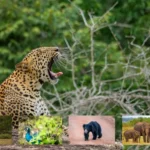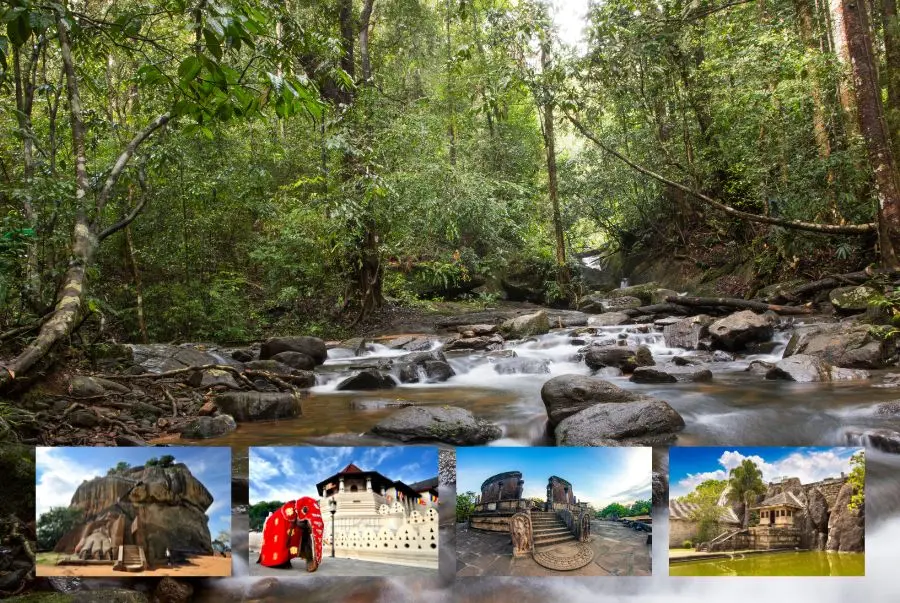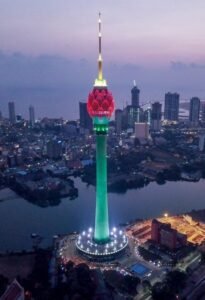Sri Lanka is a country brimming with cultural richness, ancient history, and stunning landscapes. As an island with a deep connection to both Buddhism and colonial influences, Sri Lanka is home to a variety of UNESCO World Heritage Sites that showcase its diverse heritage and natural beauty. Whether you’re interested in ancient temples, historic cities, or lush rainforests, Sri Lanka has something remarkable to offer every traveler.
In this post, we’ll explore the top 5 UNESCO World Heritage Sites in Sri Lanka that you simply can’t miss during your visit. And, with Trance Ceylon Tours & Travels, you can experience these magnificent sites with the comfort of expertly guided tours, making your visit even more unforgettable.
1. Sigiriya – The Lion’s Rock Fortress
Sigiriya, also known as the Lion’s Rock, is one of Sri Lanka’s most iconic landmarks and a UNESCO World Heritage Site. Rising nearly 200 meters above the surrounding jungle, Sigiriya is an ancient rock fortress that once served as the capital of King Kashyapa in the 5th century. The site features remarkable frescoes, water gardens, and the famous Lion’s Gate—the entrance that once had massive lion paws carved from stone.
Why Visit: Sigiriya is not only a stunning feat of ancient architecture but also offers breathtaking panoramic views from the summit. It’s a must-see for history and adventure enthusiasts alike.
Tip: The climb to the top can be steep, so start early to avoid the midday heat, and consider hiring a local guide from Trance Ceylon Tours & Travels to learn the rich history behind Sigiriya.
2. Anuradhapura – The Sacred City of Ancient Kings
Anuradhapura, Sri Lanka’s ancient capital, is a UNESCO World Heritage Site that holds deep cultural and religious significance. Founded in the 4th century BC, Anuradhapura was the center of Buddhist culture and a thriving city for over a millennium. The ruins of Anuradhapura are vast, with ancient stupas, temples, palaces, and the Sri Maha Bodhi Tree, one of the world’s oldest trees, under which the Buddha is believed to have attained enlightenment.
Why Visit: Anuradhapura offers an exceptional opportunity to step back in time and explore the roots of Sri Lanka’s Buddhist heritage, with some of the most sacred sites in the country.
Tip: Rent a bicycle for a more immersive experience, as the ancient city is spread out and best explored at your own pace.
3. Polonnaruwa – The Medieval Capital
Polonnaruwa, the medieval capital of Sri Lanka from the 11th to the 13th centuries, is a UNESCO World Heritage Site and one of the best-preserved ancient cities in the country. The city is famous for its ancient temples, including the stunning Gal Vihara with its rock-carved Buddha statues, and the Royal Palace complex. The city also features Parakrama Samudra, an ancient reservoir created by King Parakramabahu I.
Why Visit: Polonnaruwa is an open-air museum of historical ruins and an excellent place to admire Sri Lanka’s medieval architecture and engineering.
Tip: Consider visiting Trance Ceylon Tours & Travels for a guided tour to learn more about the history behind the incredible ruins.
4. Kandy – The Cultural Capital of Sri Lanka
Kandy, the last capital of the Sri Lankan kings, is home to the world-famous Temple of the Tooth (Sri Dalada Maligawa), which houses a relic of the Buddha’s tooth. This sacred temple is an important pilgrimage site for Buddhists around the world. Surrounded by lush hills and Kandy Lake, Kandy offers a perfect blend of history, culture, and natural beauty.
Why Visit: Kandy is the heart of Sri Lanka’s cultural heritage and a vibrant city with plenty to offer in terms of both historical landmarks and natural beauty.
Tip: Visit during the Kandy Esala Perahera, a spectacular annual festival held in honor of the Buddha’s tooth relic, where you can witness traditional processions, dancers, and elephants.
5. Sinharaja Forest Reserve – The Tropical Rainforest
The Sinharaja Forest Reserve is Sri Lanka’s last viable stretch of tropical rainforest and is home to a unique range of endemic plants and wildlife. This UNESCO World Heritage Site covers about 11,000 hectares and is known for its biodiversity, making it a haven for nature lovers, trekkers, and wildlife enthusiasts. It’s also home to species such as the Sri Lanka blue magpie and the purple-faced langur.
Why Visit: Sinharaja is an ecological wonder and is perfect for anyone looking to experience Sri Lanka’s natural beauty, whether you’re a birdwatcher, hiker, or eco-tourist.
Tip: Hire an experienced nature guide from Tranz Ceylon Tours & Travels to explore the forest and spot rare species, while learning about the forest’s ecosystem.
Book Your Cultural Journey with Tranz Ceylon Tours & Travels
Sri Lanka’s UNESCO World Heritage Sites are among the most important cultural and natural treasures in the world. To make the most of your visit to these incredible destinations, Tranz Ceylon Tours & Travels offers customized tours that provide comfortable transport, knowledgeable guides, and seamless travel arrangements. Whether you’re exploring the ancient ruins of Anuradhapura, climbing Sigiriya Rock, or trekking through Sinharaja’s rainforest, Trance Ceylon ensures your experience is unforgettable.
Why Choose Trance Ceylon Tours & Travels?
- Tailored Itineraries: We create tours based on your preferences, whether you’re interested in culture, nature, or adventure.
- Expert Guides: Our knowledgeable local guides will enrich your experience by providing deep insights into Sri Lanka’s history, culture, and wildlife.
- Comfort and Convenience: From comfortable transportation to personalized service, we handle all the details so you can focus on enjoying your journey.
Book your UNESCO adventure with Tranz Ceylon Tours & Travels and immerse yourself in the cultural and natural wonders of Sri Lanka!










